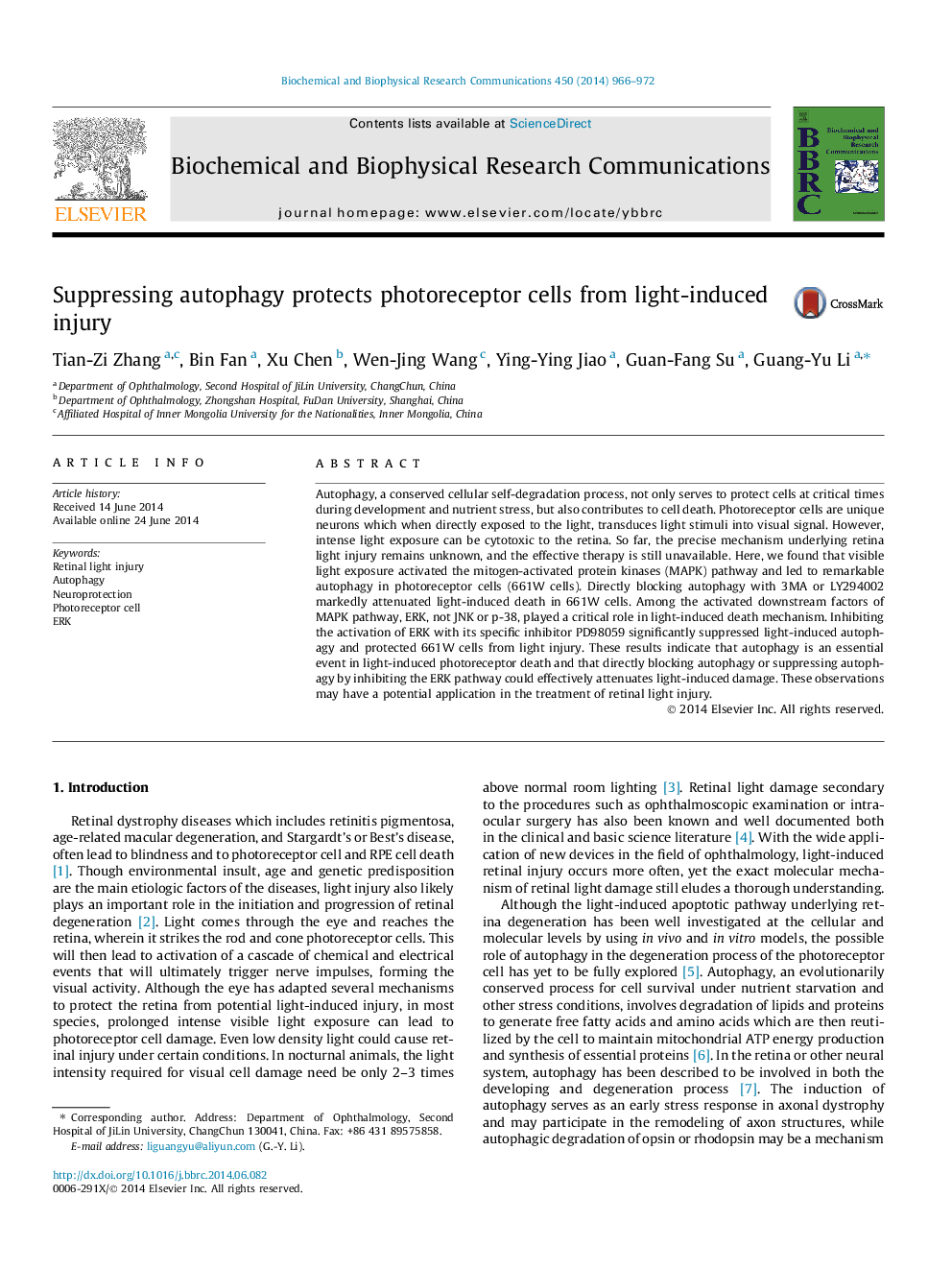| Article ID | Journal | Published Year | Pages | File Type |
|---|---|---|---|---|
| 10754631 | Biochemical and Biophysical Research Communications | 2014 | 7 Pages |
Abstract
Autophagy, a conserved cellular self-degradation process, not only serves to protect cells at critical times during development and nutrient stress, but also contributes to cell death. Photoreceptor cells are unique neurons which when directly exposed to the light, transduces light stimuli into visual signal. However, intense light exposure can be cytotoxic to the retina. So far, the precise mechanism underlying retina light injury remains unknown, and the effective therapy is still unavailable. Here, we found that visible light exposure activated the mitogen-activated protein kinases (MAPK) pathway and led to remarkable autophagy in photoreceptor cells (661W cells). Directly blocking autophagy with 3MA or LY294002 markedly attenuated light-induced death in 661W cells. Among the activated downstream factors of MAPK pathway, ERK, not JNK or p-38, played a critical role in light-induced death mechanism. Inhibiting the activation of ERK with its specific inhibitor PD98059 significantly suppressed light-induced autophagy and protected 661W cells from light injury. These results indicate that autophagy is an essential event in light-induced photoreceptor death and that directly blocking autophagy or suppressing autophagy by inhibiting the ERK pathway could effectively attenuates light-induced damage. These observations may have a potential application in the treatment of retinal light injury.
Related Topics
Life Sciences
Biochemistry, Genetics and Molecular Biology
Biochemistry
Authors
Tian-Zi Zhang, Bin Fan, Xu Chen, Wen-Jing Wang, Ying-Ying Jiao, Guan-Fang Su, Guang-Yu Li,
